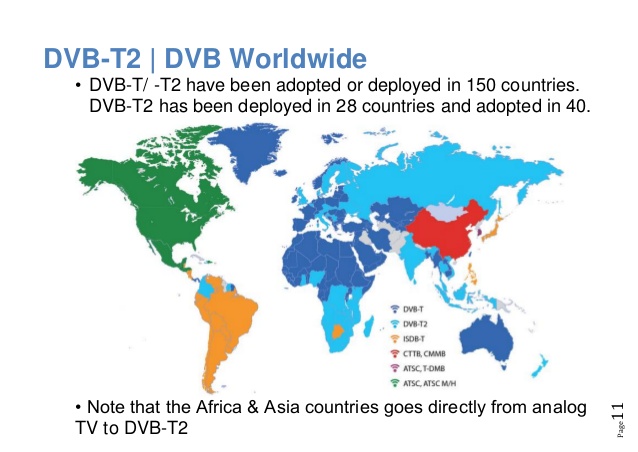NEWS CENTER

TV services using DVB standards are available on every continent with nearly 1 billion DVB receivers deployed. DVB-S and DVB-S2 are used in virtually every country in the world. DVB-C is also widely used. DVB-T and DVB-T2 have been trailed, adopted or deployed in 150 countries with DVB-T2 deploying an in increasing number of countries around the world.
DVB-T2 , future trends!
DVB-T2 is the world’s most advanced digital terrestrial television (DTT) system, offering more robustness, flexibility and at least 50% more efficiency than any other DTT system. It supports SD, HD, UHD, mobile TV, or any combination thereof.
As with DVB-T, the new standard targets not just roof-top and set-top antennas, but also PCs, laptops, in-car receivers, radios, smart phones, dongles, and a whole range of other innovative receiving devices. In countries where DVB-T services are already on air DVB-T and DVB-T2 services are likely to coexist side-by-side for some time to come, but in green-field countries that have not yet deployed DTT services, there is a unique opportunity to leapfrog directly to DVB-T2 instead of first deploying DVB-T. A future-proof solution!
A multitude of DVB-T2 set-top boxes and integrated TV receivers are now available and prices have already dropped to around 25 USD. The price difference between comparable DVB-T and T2 integrated TV sets is already negligible.

